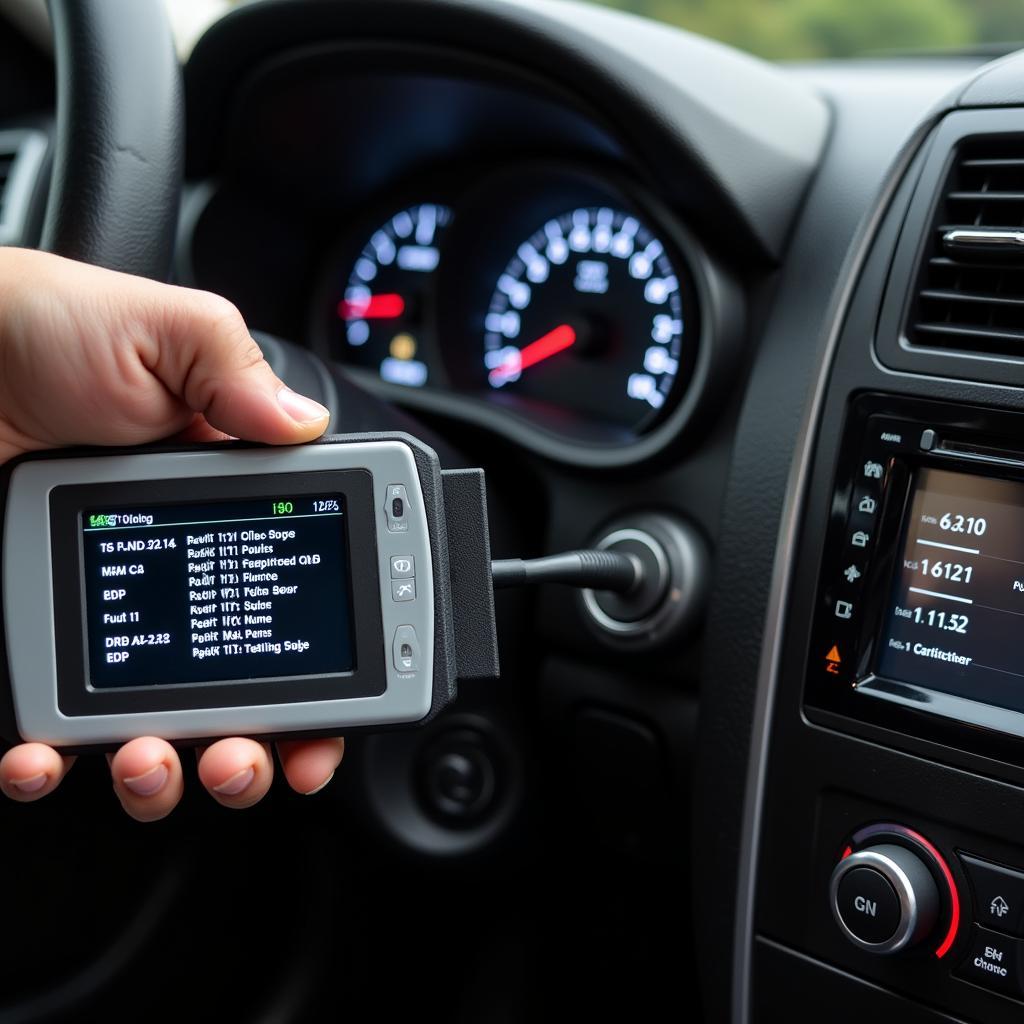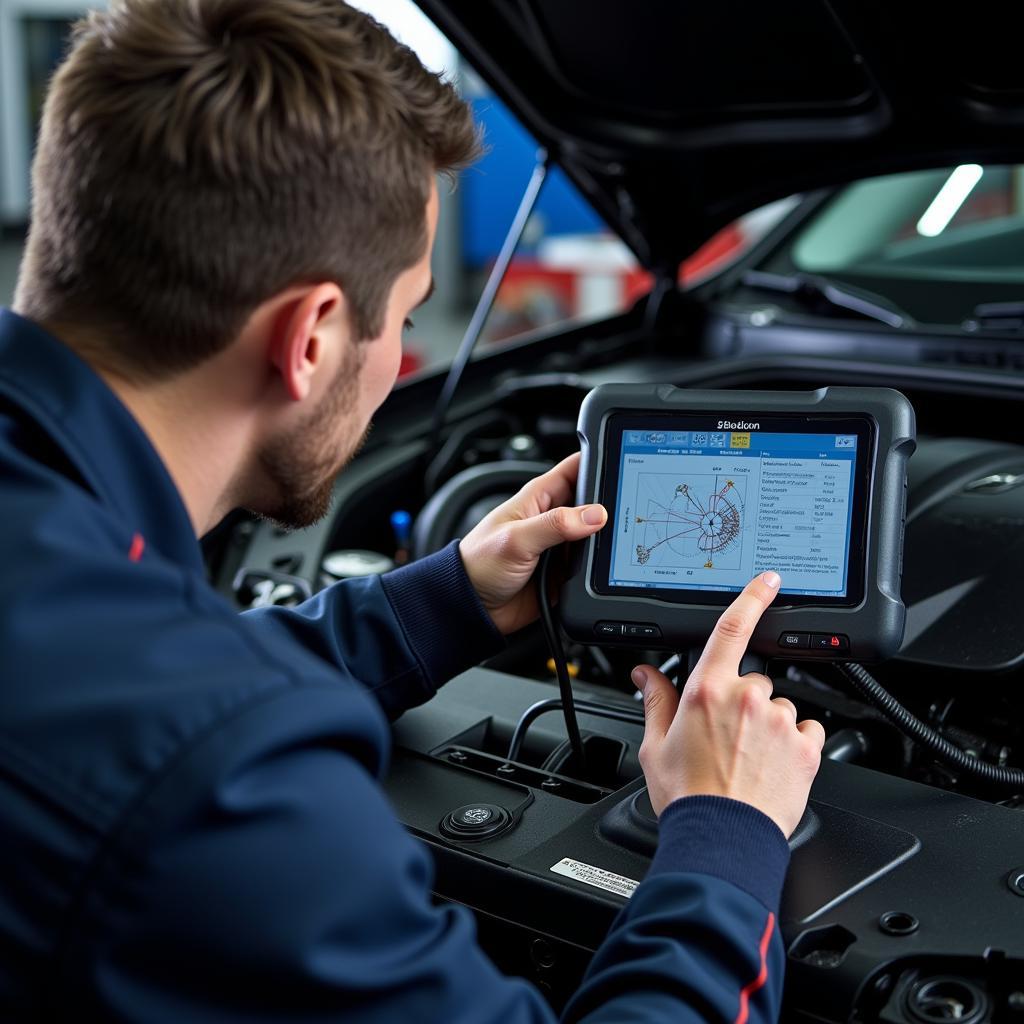The world of Japanese cars is vast and diverse, known for their reliability and innovative technology. But when those pesky dashboard lights flash, a reliable Japanese Car Diagnostic Scanner can be your best friend. Whether you’re a seasoned mechanic or a car enthusiast, having the right scanner can save you time, money, and unnecessary headaches.
 Guide to Japanese Car Diagnostic Scanners
Guide to Japanese Car Diagnostic Scanners
Understanding the Importance of a Japanese Car Diagnostic Scanner
Modern vehicles are rolling computers, packed with sensors and electronic control units (ECUs) that monitor everything from engine performance to airbag systems. A diagnostic scan tool for cars, particularly one designed for Japanese makes, acts as a decoder, translating the complex language of these systems into understandable codes and data.
This information empowers you to:
- Diagnose Engine Problems: Identify issues with fuel delivery, ignition timing, emissions, and more.
- Troubleshoot Transmission Faults: Analyze shifting patterns, clutch engagement, and other transmission components.
- Investigate Warning Lights: Decipher the meaning behind those cryptic ABS, airbag, check engine, and other warning lights.
- Reset Service Reminders: Clear service lights and reset maintenance intervals after completing scheduled services.
- Access Vehicle Data: Monitor live data streams for real-time insights into your vehicle’s performance.
Navigating the World of Japanese Car Scanners
Finding the right diagnostic scan tool for japanese cars requires understanding your needs and the scanner’s capabilities. Here’s a breakdown:
1. OBD-II Scanners: The Essential Tool
All cars manufactured after 1996 come equipped with an OBD-II port, and these scanners are the entry point to basic diagnostics. They can:
- Read and clear basic engine fault codes
- Display live data like engine RPM and coolant temperature
- Verify emissions readiness for state inspections
Who are they for? Car owners looking for a budget-friendly option to diagnose simple engine issues.
 OBD-II Scanner for Japanese Cars
OBD-II Scanner for Japanese Cars
2. Enhanced OBD-II Scanners: Taking it Up a Notch
These scanners offer more advanced features than basic OBD-II tools, making them suitable for DIYers and professional mechanics alike. They provide:
- Access to manufacturer-specific codes beyond basic OBD-II codes
- Bi-directional control to activate components for testing
- Advanced live data graphing and analysis
Who are they for? Car enthusiasts and DIYers who want more in-depth diagnostic capabilities and control.
3. Professional-Grade Scanners: The Ultimate Diagnostic Powerhouse
These high-end scanners offer the most comprehensive diagnostic functionality, often specific to certain car manufacturers. They provide:
- Access to all vehicle modules and systems
- Advanced programming and coding capabilities
- ECU flashing and reprogramming
- Technical support and regular software updates
Who are they for? Professional mechanics and workshops requiring the most advanced diagnostic and programming tools.
 Professional-Grade Scanner for Japanese Cars
Professional-Grade Scanner for Japanese Cars
Key Features to Consider
When choosing a car diagnostic machine for all cars, especially for Japanese makes, look for these features:
- Vehicle Coverage: Ensure the scanner explicitly supports the make, model, and year range of your Japanese vehicle(s).
- Code Library: A comprehensive code library with detailed descriptions helps you understand the meaning of fault codes quickly.
- Live Data Streaming: The ability to monitor live sensor data allows you to diagnose intermittent issues and analyze performance.
- Bi-Directional Control: This feature lets you activate components like fuel injectors or ABS solenoids to test their operation.
- User Interface: A user-friendly interface with clear menus and intuitive navigation makes the scanner easy to operate.
- Updates and Support: Regular software updates and reliable technical support are crucial for keeping your scanner up-to-date with the latest vehicle models and technologies.
Investing in Knowledge: The Key to Accurate Diagnostics
While having the right car diagnostic machine for sale in kenya is essential, remember that a scanner is only as good as its user. Invest in understanding:
- Basic Automotive Principles: Familiarize yourself with how engines, transmissions, and other systems work.
- OBD-II Codes: Learn how to interpret generic OBD-II codes and their meanings.
- Manufacturer-Specific Codes: Research the specific codes used by your Japanese car manufacturer.
Numerous resources, including online forums, workshops, and car diagnostics train programs, can equip you with the knowledge to diagnose and repair your Japanese vehicle effectively.
Conclusion
A japanese car diagnostic scanner is an invaluable tool for any car owner or mechanic dealing with Japanese vehicles. By understanding your needs and the features to look for, you can find the perfect scanner to keep your Japanese car running smoothly for years to come.

Leave a Reply